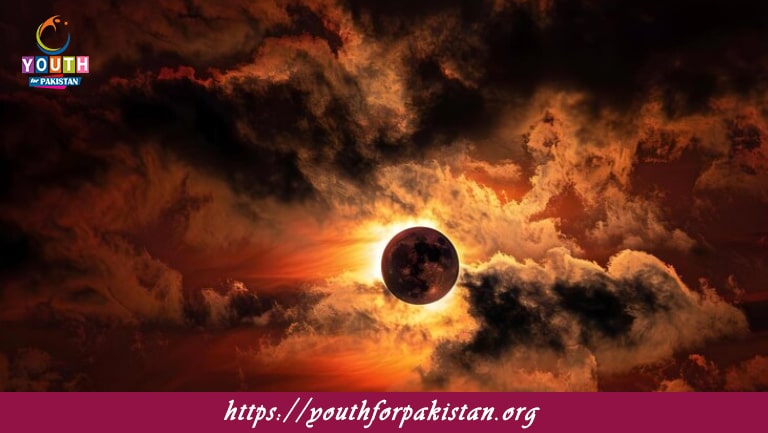Welcome to the Kuiper Belt and Oort Cloud MCQs with Answers. In this post, we are sharing Kuiper Belt and Oort Cloud Multiple Choice Questions and Answers in Astronomy section for various competitive exams in Pakistan. Each question offers a chance to enhance your knowledge regarding Kuiper Belt and Oort Cloud online MCQs Test.
The Kuiper Belt is located beyond the orbit of which planet?
a) Mars
b) Jupiter
c) Neptune
d) Saturn
Which of the following is a well-known dwarf planet in the Kuiper Belt?
a) Ceres
b) Eris
c) Pluto
d) Haumea
The Oort Cloud is theorized to be the origin of which type of celestial object?
a) Asteroids
b) Short-period comets
c) Long-period comets
d) Meteoroids
What is the primary composition of objects in the Kuiper Belt?
a) Metal
b) Gas
c) Ice and rock
d) Hydrogen
The Oort Cloud is believed to be located how far from the Sun?
a) 1-10 AU
b) 50-100 AU
c) 200-300 AU
d) 2,000-100,000 AU
Which of these is NOT a known dwarf planet in the Kuiper Belt?
a) Makemake
b) Haumea
c) Ceres
d) Sedna
What characteristic differentiates the Kuiper Belt from the Oort Cloud?
a) Location within the solar system
b) Composition of objects
c) Only the Kuiper Belt has dwarf planets
d) Size of the objects
Which space mission provided key information about Pluto and the Kuiper Belt?
a) Voyager 1
b) New Horizons
c) Cassini
d) Hubble Space Telescope
The Kuiper Belt extends approximately from how many AU beyond Neptune?
a) 5-15 AU
b) 30-50 AU
c) 100-200 AU
d) 10-25 AU
What is the main difference between short-period and long-period comets?
a) Composition
b) Size
c) Orbital period
d) Distance from the Sun
Which of the following is a characteristic of the Oort Cloud?
a) It contains only rocky objects
b) It lies closer to the Sun than the Kuiper Belt
c) It is spherical in shape
d) It only contains planets
Sedna is considered part of which region?
a) Asteroid Belt
b) Kuiper Belt
c) Inner Solar System
d) Scattered Disc
Which celestial body is NOT part of the Kuiper Belt?
a) Haumea
b) Eris
c) Io
d) Makemake
What type of orbit do most Kuiper Belt Objects (KBOs) have?
a) Circular
b) Highly elliptical
c) Retrograde
d) None
The Oort Cloud is considered the edge of what?
a) Earth’s atmosphere
b) The solar system’s gravitational influence
c) The Sun’s radiation zone
d) The Milky Way galaxy
The Kuiper Belt is often referred to as what?
a) The Cradle of Planets
b) The Third Zone
c) The Scattered Edge
d) The Ice Frontier
Which element is found in abundance in both Kuiper Belt and Oort Cloud objects?
a) Iron
b) Silicon
c) Methane
d) Helium
Which planet’s gravity likely influenced the formation of the Oort Cloud?
a) Saturn
b) Jupiter
c) Uranus
d) Venus
Which of the following describes the shape of the Kuiper Belt?
a) Spherical
b) Toroidal
c) Elliptical
d) Disk-like
The existence of the Oort Cloud was first proposed by which astronomer?
a) Edmond Halley
b) Jan Oort
c) Galileo Galilei
d) Isaac Newton
Which planet is most associated with perturbing Kuiper Belt Objects (KBOs)?
a) Venus
b) Mars
c) Neptune
d) Mercury
How many known objects exist within the Kuiper Belt?
a) 10-20
b) 50-100
c) Thousands
d) Millions
Objects from the Oort Cloud are thought to be the source of what?
a) Meteors
b) Long-period comets
c) Dwarf planets
d) Asteroids
The Oort Cloud is primarily composed of which types of objects?
a) Iron-rich meteoroids
b) Rocky asteroids
c) Icy planetesimals
d) Gaseous bodies
Which spacecraft flew by Pluto, giving humanity its first close-up view of a Kuiper Belt object?
a) Pioneer 10
b) Voyager 2
c) New Horizons
d) Galileo
How far is the inner boundary of the Oort Cloud from the Sun?
a) 1 AU
b) 100 AU
c) 1,000 AU
d) 10,000 AU
How do objects in the Kuiper Belt primarily differ from those in the asteroid belt?
a) They are primarily icy rather than rocky
b) They are larger
c) They orbit closer to the Sun
d) They have shorter orbital periods
Which of the following is a trans-Neptunian object?
a) Mars
b) Europa
c) Pluto
d) Mercury
Where do short-period comets typically originate?
a) Oort Cloud
b) Kuiper Belt
c) Asteroid Belt
d) Beyond the solar system
What is the estimated distance between the outer boundary of the Kuiper Belt and the inner edge of the Oort Cloud?
a) 50 AU
b) 100 AU
c) 1000 AU
d) 10,000 AU
Which object in the Kuiper Belt has a ring system?
a) Pluto
b) Eris
c) Haumea
d) Sedna
How thick is the Kuiper Belt in its central region?
a) 5-10 AU
b) 50 AU
c) 500 AU
d) 10,000 AU
Which of the following regions is furthest from the Sun?
a) Asteroid Belt
b) Kuiper Belt
c) Oort Cloud
d) Scattered Disc
The hypothetical planet “Planet Nine” is believed to exist where?
a) In the Oort Cloud
b) In the Kuiper Belt
c) Beyond the Kuiper Belt
d) In the Asteroid Belt
Which comet was confirmed to originate from the Oort Cloud?
a) Halley’s Comet
b) Hale-Bopp
c) Swift-Tuttle
d) Comet Tempel 1
Which of the following is not considered a region of small icy bodies in the outer solar system?
a) Asteroid Belt
b) Kuiper Belt
c) Oort Cloud
d) Scattered Disc
What is the inclination of the Kuiper Belt relative to the plane of the solar system?
a) 0 degrees
b) 30 degrees
c) 90 degrees
d) It varies
The largest objects in the Kuiper Belt are often referred to as what?
a) Kuiper Giants
b) Planetesimals
c) Ice Dwarfs
d) Plutinos
If you are interested to enhance your knowledge regarding Physics, Chemistry, Computer, and Biology please click on the link of each category, you will be redirected to dedicated website for each category.








